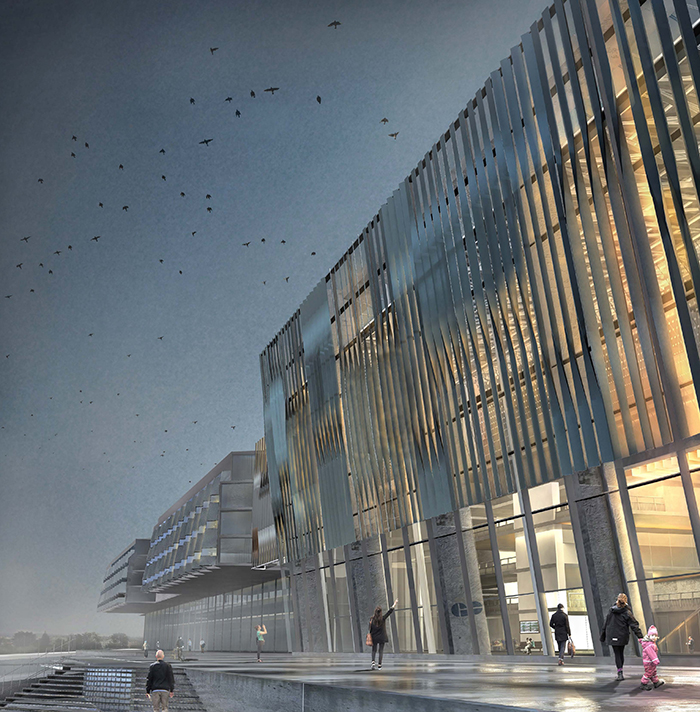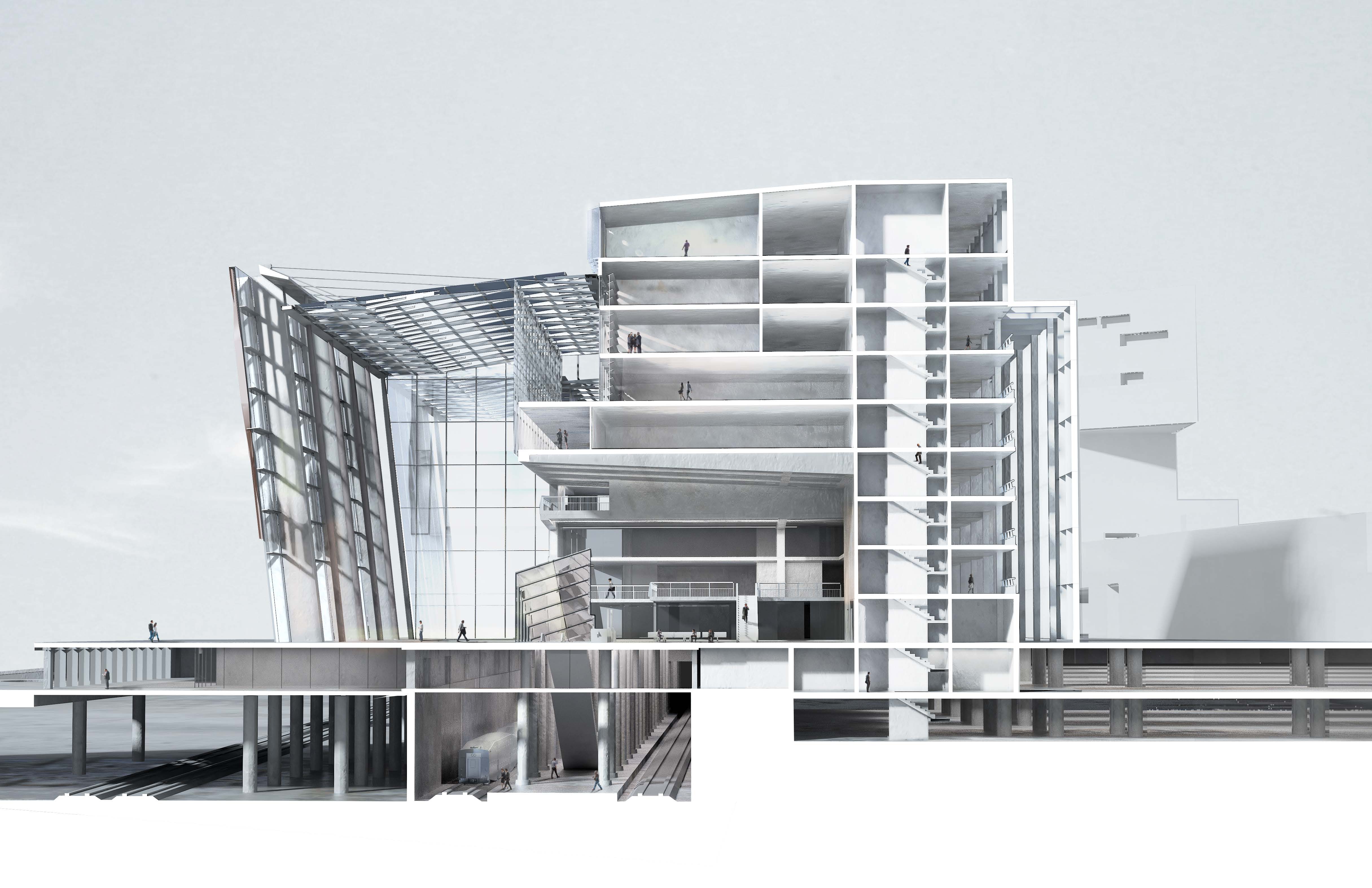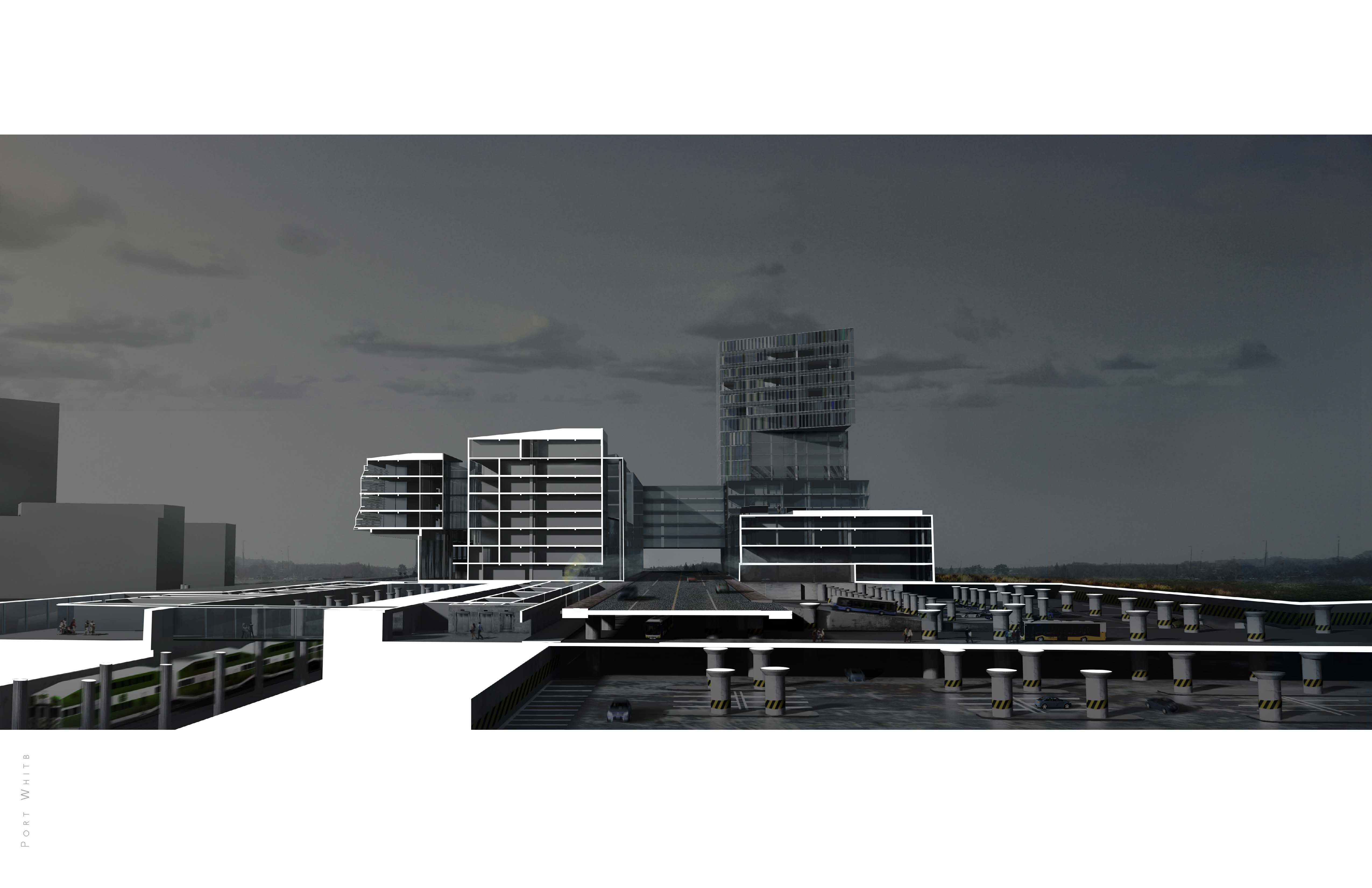MUD Thesis
The Design of a Transit Village in Port Whitby
Railway stations evolved from a series of disconnected architectural incidents, intimately surrounded by other pre-existing programs in early 19th century, to specific single-program civic buildings with grand civic monumentality in the 1850s. They evolved again into multiprogrammed architecture, becoming a major force shaping regional society and its economy in the post war era. From a series of disconnected architectural incidents to a multiprogrammed architecture, railway stations have become more than transit facilities — they have become relatively independent systems that serve but are also served by the city.
Based on the above research, the design exploration of this thesis has focused on updating the existing railway station of Port Whitby to promote the parking, driving, and intransit experiences, as well as the masterplan for a transit village in the adjacent area. Inspired by Grand Central Station in New York City, the main strategy would include proposing an urban platform with a mega mixed-used transit structure on top. In addition, this mega transit facility would introduce more development to Port Whitby with enhanced livability as well as improved railcrossing connectivity that better integrates the north and south areas. In broader environmental terms, the facility can also help improve air quality by prioritizing walking and cycling.





